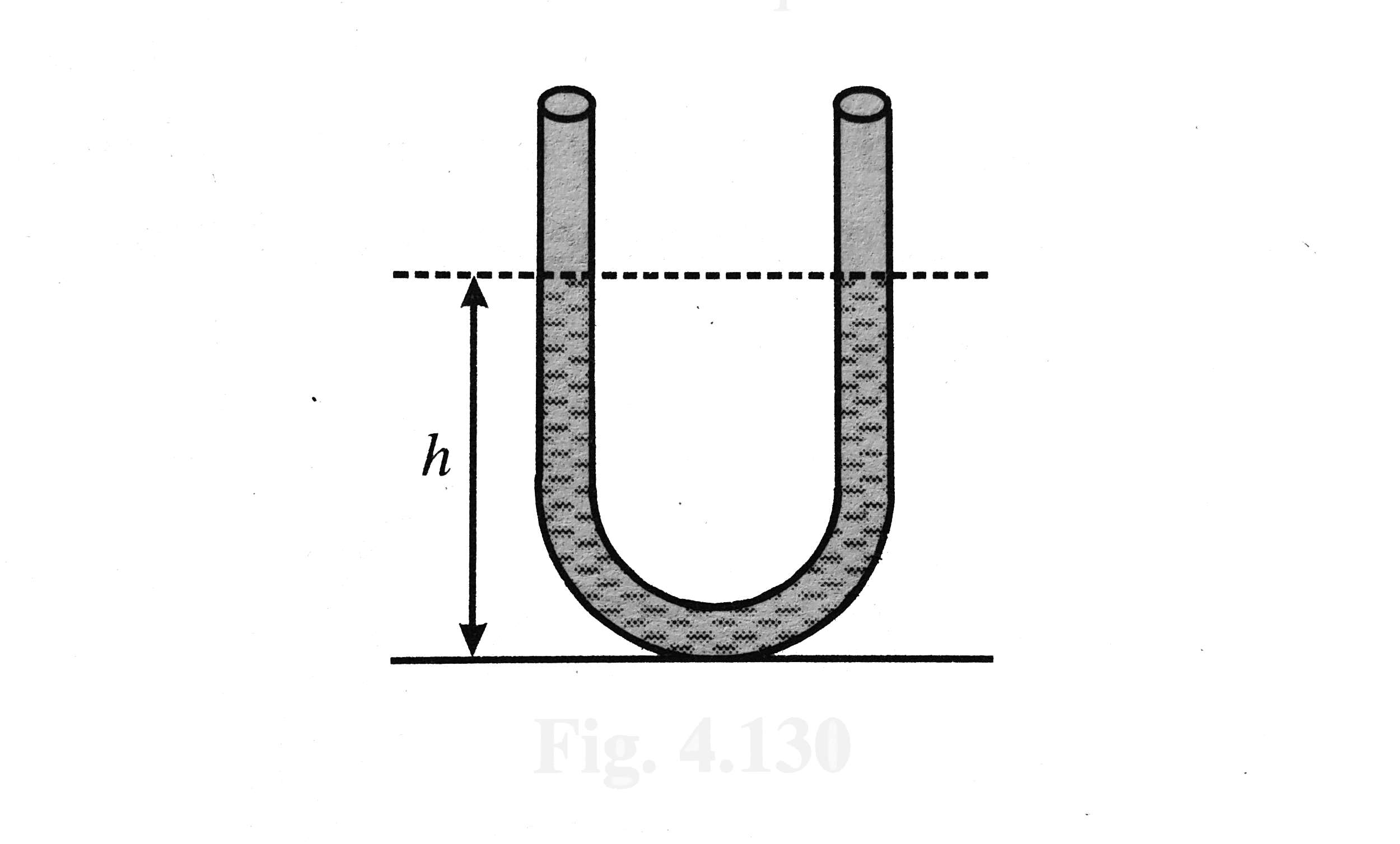Motion of an oscillating liquid column in a U-tube is
periodic but not simple harmonic.
non-periodic
simple harmonic and time period is independent of the density of the liquid.
simple harmonic and time period is directly proportional to the density of the liquid.
The correct Answer is:C
Motion of an oscillating liquid column in a U tube is SHM with period, T=2π√hg, where h is the height of liquid column in one arm of U tube in equilibrium position of liquid. Therefore, T is independent of density of liquid.
Topper's Solved these Questions
- OSCILLATIONS BOOK - NCERT FINGERTIPSCHAPTER - OSCILLATIONS EXERCISE - Damped Simple Harmonic Motion
5 Videos
- OSCILLATIONS BOOK - NCERT FINGERTIPSCHAPTER - OSCILLATIONS EXERCISE - Forced Oscillation And Resonance
6 Videos
- OSCILLATIONS BOOK - NCERT FINGERTIPSCHAPTER - OSCILLATIONS EXERCISE - Energy In Simple Harmonic Motion
11 Videos
- MOTION IN A STRAIGHT LINEBOOK - NCERT FINGERTIPSCHAPTER - MOTION IN A STRAIGHT LINEEXERCISE - Assertion And Reason
15 Videos
- PHYSICAL WORLDBOOK - NCERT FINGERTIPSCHAPTER - PHYSICAL WORLDEXERCISE - Assertion And Reason
10 Videos
Similar Questions
Which of the following examples examples represent (nearly) simple harmonic motion and which represent periodic but not simple harmonic motion?
(a) The rotation of earth about its axis. (b) Motion of an oscillating mercury column in a U tube,
(c) Motion of a ball bearing inside a smooth curved bowl, when released from a point slightly above the lower most position. (d) General vibrations of a polyatomic molecule about its equilibrium position.
View SolutionFind the expressions for time period and frequency
(i) in the oscillations of a liquid in a U tube
(ii) in the oscillations of a floating cylinder
View Solution
Knowledge Check
A U-tube of uniform cross-section holds 1 kg of pure mercury and 0.2 kg of water in equilibrium. The diameter of cross-section is 1.2 cm. Relative density of mercury is 13.6. If the system in equilibrium is slightly disturbed, the period of oscillation of the liquid column in the tube will be (takeg=10ms−2)
A1.0 sB1.54 sC1.50 sD2.0 sSTATEMENT-1 : The height of a liquid column in a U-tube is 0.3m. If the liquid in one of the limbs is depressed, and then released, the time period of liquid column will be 1.1sec.
STATEMENT-2 : this follows from the relation.
T=2π√hgAStatement-1 is True, Statement-2 is True, Statement-2 is a correct explanation for Statement-1.BStatement-1 is True, Statement-2 is True, Statement-2 is NOT a correct explanation for Statement-1.CStatement-1 is True, Statement-2 is False.DStatement-1 is False, Statement-2 is True.Assertion : Water in a U-tube executes S.H.M when water is replaced by mercury filled up to the same height , the time period of S.H.M will increases.
Reasion : Time period of liquid oscillating in a U-tube increases with density of liquid .AIf the assertion and reason are correct and reason is a correct explanation of the assertionBIf both assertion and reason are correct but reason is not the correct explanation of assertionCIf assertion is correct but reason is incorrectDIf both assertion and reason are incorrect
Consider a liquid which fills a uniform U - tube uniform U- tube, as shown in figure , up to a height h. Find angular the frequency of small oscillation of th eliquid in the U - tube.

View SolutionA liquid of mass m set into oscillations in a U-tube of cross section A. Its time period recorded is T, where T=2π√l2g, here l is the length of liquid column. If the liquid of same mass is set into oscillaions in U-tube of cross section A16 then determine time period of oscillation.
View SolutionSTATEMENT-1: Time period of the liquid executing S.H.M.in a U-tube depends on the area of cross section of U-tube.
and
STATEMENT-2 : The restoring force acting on liquid displaced from equilibrium position of U -tube depends on the difference in levels of liquid in the two limbs of U -tube.
View SolutionThe formula for height of a liquid column (h) in a capillary tube is
View SolutionA capillary tube when immersed vertically in a liquid records a rise of 6 cm . If the tube is immersed inclined 30∘ with the vertical , then length of liquid column along the tube will be
View Solution
